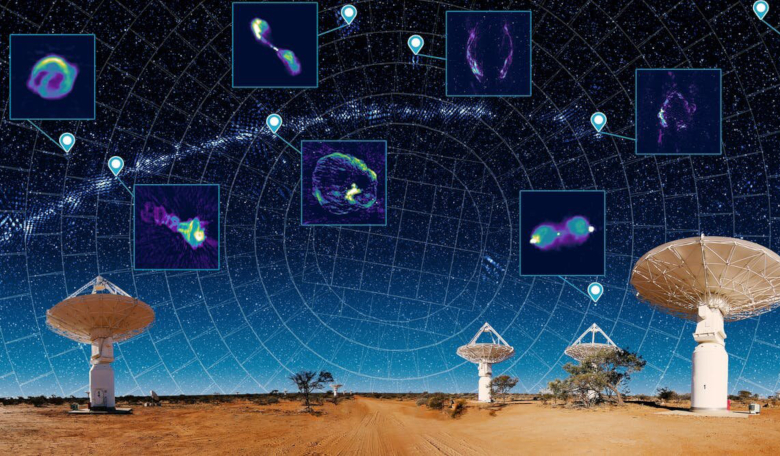In a feat which normally takes years to complete, the Australian Square Kilometre Array Pathfinder (ASKAP), developed and operated by Australia's national science agency, CSIRO, has mapped approximately three million galaxies in just 300 hours.
The study, dubbed the Rapid ASKAP Continuum Survey (RACS), surveyed 83 percent of the sky in record-breaking time to produce the most detailed survey of the southern sky ever carried out using radio waves.
All in all, 13.5 exabytes of raw data was generated by ASKAP during the survey – one exabyte is the equivalent of one billion gigabytes.
The finished product looks like an image of a normal night sky vista CSIRO says, but instead of stars, the millions of bright specks captured on the panorama are distant galaxies beyond the Milky Way. It’s like a “Google map of the Universe,” the science agency adds.
Of the three million galaxies mapped, about a million have never been seen before; a finding that will help astronomers when undertaking statistical analyses of large populations of galaxies.
"This census of the Universe will be used by astronomers around the world to explore the unknown and study everything from star formation to how galaxies and their super-massive black holes evolve and interact," lead author and CSIRO astronomer Dr. David McConnell said.
Thanks to the telescope's wide field of view, generated by new CSIRO-designed receivers, ASKAP has been able to produce images five times more sensitive and twice as detailed as previous ones.
Whats more, only 903 images, each requiring 15 minutes of exposure time, were needed to form the full map of the sky – significantly less than the tens of thousands of images needed for previous all-sky radio surveys.
“ASKAP is a major technological development that puts our scientists, engineers and industry in the driver's seat to lead deep space discovery for the next generation,” says Australia’s Minister for Industry, Science and Technology, Karen Andrews. “This new survey proves that we are ready to make a giant leap forward in the field of radio astronomy.”
Situated about 800 kilometres north of Perth on a remote site in outback Western Australia, ASKAP has been constructed in a legislated radio quiet zone, making it one of the most radio quiet locations on Earth.
In addition to being a world-leading telescope in its own right, ASKAP is an important technology demonstrator for the Square Kilometre Array (SKA); an international effort to build the world’s largest radio telescope.
The SKA will eventually use thousands of dishes and up to a million low-frequency antennas that will work together to produce a virtual dish with a collecting area of one square kilometre (or one million square metres).
ASKAP’s 36 antennas became fully operational in February 2019 and it is currently conducting pilot surveys with the goal of beginning large-scale projects in 2021.
"For the first time ASKAP has flexed its full muscles, building a map of the Universe in greater detail than ever before, and at record speed,” McConnell said. “We expect to find tens of millions of new galaxies in future surveys.”
The images and catalogues from the survey will be made publicly available through the CSIRO Data Access Portal and will be hosted at the Pawsey Supercomputing Centre; the facility which converted the survey data into 2-D radio images containing a total of 70 billion pixels.











